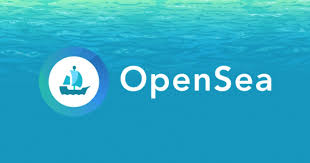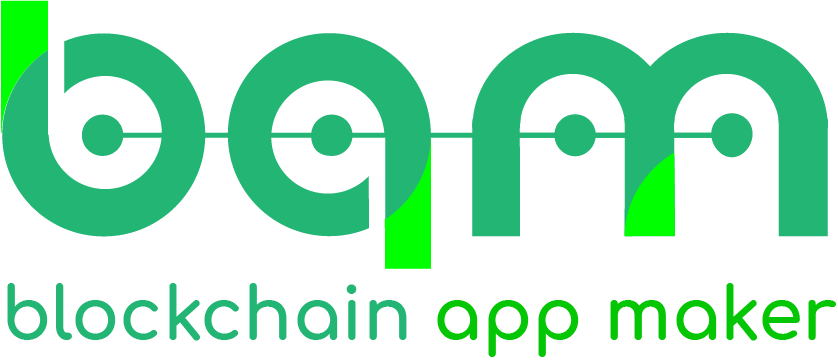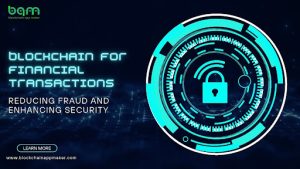
Non-fungible tokens have been increasingly popular in recent years, as the globe enters the early stages of the digital revolution. This is the point at which the demand for NFT markets began to skyrocket. A flurry of additional NFT markets is now available to pick from. The NFT space, on the other hand, offers more opportunities for newcomers to create their own NFT marketplace.
Some of the most well-known NFT marketplaces are OpenSea, Axie Marketplace, NBA Top Shot Marketplace, SuperRare, Rarible, Foundation, and others. Among these, OpenSea is the most well-known and widely used by NFT lovers for trading. This is why a firm like OpenSea is preparing to develop an online marketplace.
Do you want to be one? For entrepreneurs, here’s a blog on the development of an OpenSea Clone. Continue reading to learn more!
A Quick Overview of the NFT Marketplace
NFTs, or non-fungible tokens, are digital assets that reflect real-world artifacts like art, music, sporting events, in-game goods, films, and so on. An NFT marketplace, on the other hand, is a platform that makes trading digital assets straightforward and painless.
The Need for a Market for Non-Financial Transactions
For example, digital creators such as artists formerly had to rely on others to sell their work; now, they may now mint their work as an NFT and sell it without trouble.
However, they no longer face these challenges since they can simply mint and sell their NFTs through a virtual medium known as the NFT marketplace. The need for an online trading platform is on the rise.
Digital creators might use this platform to make their work available to a worldwide audience and profit from it. Without a question, it is a top-tier company niche to examine in the current environment, given the high trade volume and market capitalization.
The largest NFT marketplace is OpenSea.
OpenSea, which increased its trading volume from $1.1 million transactions per month to $3.4 billion in August 2021, is an eyewitness to real-time. This website allows users to trade digital things and crypto-collectibles, as well as purchase and sell them. NFTs that are to be exchanged has been demonstrated to be one-of-a-kind, rare, widely used, and tradable over the world. This appears to be an important aspect of how a trading platform should be.
An Overview of the OpenSea Clone
OpenSea Clone is a ready-to-use solution for NFT-based trading that allows entrepreneurs to get up and running quickly. This system includes key features and capabilities for smooth digital asset trading (buying and selling). The main benefit of having this is that it allows for specific customization in line with the needs of enterprises. The next part will explain what OpenSea Clone is all about.
How Does OpenSea’s NFT Marketplace Work?
OpenSea is the NFT platform for exchanging digital products and crypto collectibles, as previously said. On a quick note, here is the detailed and usual procedure of an NFT marketplace like OpenSea. Let’s have a look at how the workflow is broken down into steps.
1st step
Users should register with the NFT marketplace, whether they are sellers or buyers, by providing the relevant information. To confirm identification, the KYC verification procedure must be completed.
2nd Step
The second step is to set up the wallet, which allows users can pick which wallet they want to use to keep their digital assets safely.
3rd step
Now, vendors must mint their works as NFTs, which is analogous to submitting photos to social media platforms. Others who have registered on the platform will now be able to purchase it.
4th step
After listing the NFTs, they must choose between a set pricing option and an auction. They must establish the purchase price for the listed NFT when picking the fixed pricing. If they choose the auction option, they must first establish a bid price.
5th step
Buyers may browse the listings for the NFTs they wish to buy on the counterpart. The platform categorizes digital assets, allowing users to quickly search for NFTs using the filter.
6th step
The buyer will possess the buyable NFT after the payment transaction is completed. The person who bids the highest at the end of the auction will be the one to keep it after the payment transaction is completed.
Important Considerations for the Development of an OpenSea Clone
You should now have a good understanding of how the OpenSea NFT marketplace works. To sum up, the infusion of characteristics will decide this. The following are the key aspects that must be taken into account while creating an OpenSea Clone.
Storefront
An NFT marketplace like OpenSea desperately needs a visually appealing storefront. Users may see the listings’ basic information, such as the price, owners, and so on.
Option for intelligent search
The NFTs are posted on the marketplace, and platform users may scroll through them to locate the one they want to purchase. Users may utilize the smart search tool to narrow their search results based on pricing, listing status, collections, and other factors.
Make a listing
Users may develop and upload digital collectibles with all of the relevant information, such as plugin name, tag, description, and other parameters. The non-fungible tokens would be uploaded in the same way that a post would be uploaded to a social networking platform.
Bid & Buy
It’s critical to think about both the buy and bid options since the platform’s sellers might use either of them to conduct NFT trading. When using the bid option, sellers must include information such as the bid expiration date, bid value, and so on.
Wallet
Users will be able to save, transmit, and receive non-fungible tokens in a safe manner using the white-label OpenSea Clone with the integration of an e-wallet.
History of trading
The trading history feature on the platform will allow customers to review the history of NFT trading. They’ll be able to keep better track of payment transactions as well.
The Most Important OpenSea Clone Script Features
The OpenSea Clone Script is based on a framework that incorporates the functionality listed below.
Liquidity
Cross-chain trading of non-fungible tokens provides liquidity. Investors will flock to the platform because of its high liquidity, which will allow them to purchase and sell NFTs in real-time. The abundance of digital assets listed in the marketplace, along with a huge liquidity pool, will entice investors to make their next big acquisition.
Tradability
Simple NFT trading ensures that unique and non-interchangeable non-fungible tokens may be purchased and sold. Yes, NFT owners have the ability to mint and list NFTs, as well as set up purchasing and bidding in the NFT marketplace.
Scarcity
Making this platform capable of listing uncommon products. As a result, users couldn’t find the NFTs anywhere else. As a result, a white-label NFT marketplace is conceived and built to accept one-of-a-kind products.
Interoperable
Non-fungible tokens are one-of-a-kind, as we all know, and therefore need a standard to specify what they can accomplish. The “Interoperable” aspect ensures that NFTs of various standards may be minted, listed, bought, and sold. The following is a list of NFT standard tokens.
ERC-721
ERC-998
ERC-1155
dGoods
TRC-721
FA2
An OpenSea clone’s Revenue Streams Are Diversified
Creating an NFT trading platform is currently a viable commercial enterprise. In terms of trading volume, the NFT market generated $23 billion in 2021, as evidenced by the NFT sphere’s compensation. Here are the several revenue modules via which the platform owner may profit from the OpenSea Clone.
Fees for Listing
Because digital producers may advertise their digital works on the NFT trading platform, it appears to be a center for digital collectibles. In exchange for this, they must pay a percentage of the listing fee.
Fees for transactions and gas
You might charge consumers a tiny transaction or gas cost whenever they make a transaction for NFT trading. This is to ensure the blockchain network’s continued operation and upkeep.
Fees at the Start
When digital producers or artists complete the first registration procedure and proceed with the funding process in order to list their first NFTs on the trading platform, the initial setup fee might be paid.
Fees for Minting
The mint option is available to site users who want to convert their assets into NFTs.To do so, you’d have to charge a minting fee.
Bidding Fees
NFT fans who intend to engage in the bidding process to purchase a certain NFT may be charged a certain proportion as a bidding fee.
Make Your Way To The Development Of The OpenSea-Like NFT Marketplace
We’re almost to the conclusion of this educational blog. Have you considered developing an NFT-based trading platform that allows you to buy and sell NFTs of various standards? Continue with the construction of an NFT marketplace similar to OpenSea. You should find a reputable firm that specializes in supplying the OpenSea Clone solution with the following advantages.
- Instant platform deployment with aspects of end-to-end customization and scalability.
- Support for multi-signature crypto wallets for keeping digital assets safely and securely.
- The ability to integrate APIs and third-party plugins, as well as cross-platform compatibility.
In Summary,
Blockchain, bitcoin, and NFTs are buzzwords in today’s society, and they will have a significant influence in the next years. As a result of the uproar over NFTs, the growth of trading platforms has skyrocketed. As a result, creating an NFT marketplace like OpenSea to make your imprint in the NFT field is a preferable option. Contact the top OpenSea Clone development firm to help you shape your business concept!

